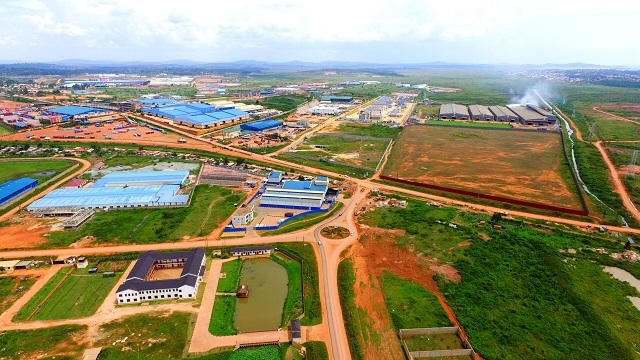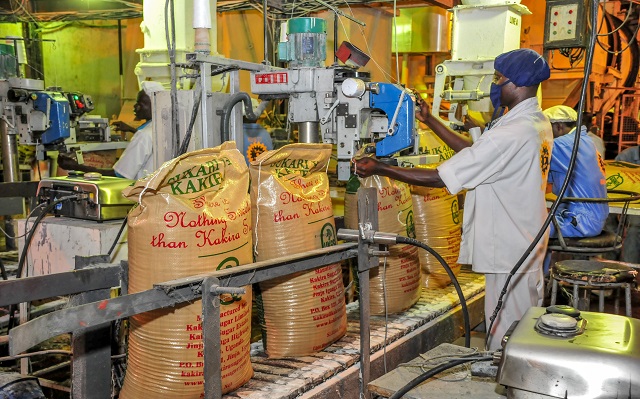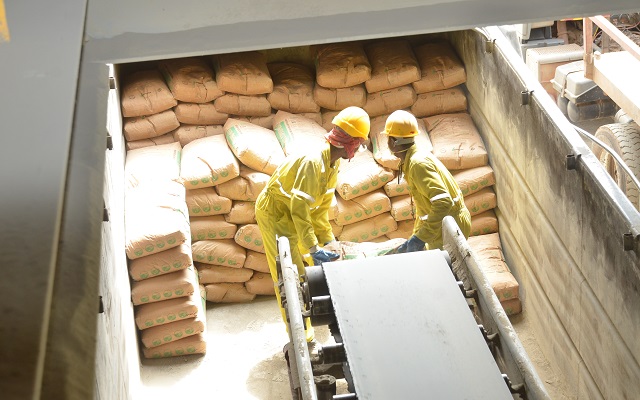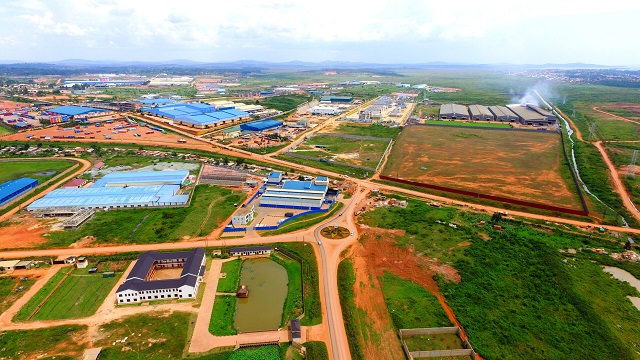
Trade experts recognize progress made but express dissatisfaction with existing trade and investment policies
Kampala, Uganda | ISAAC KHISA | In the late 1990s, the Ugandan government came up with the idea of establishing specialized zones dedicated to industries, commonly known as industrial and business parks, where local and foreign investors would be provided with the opportunity to acquire free land and numerous tax exemptions to set up factories for local production.
The goal was clear – to encourage investment in manufacturing and enable the production of goods within the country’s borders and help reduce imports and create jobs.
Over the past decades, the model which was first pioneered at Namanve located along the Kampala-Jinja highway with the launch of the Kampala Industrial and Business Park in 2002, has proven to be successful, laying a strong foundation for the creation of a business-friendly environment, promoting economic growth and attracting diverse industrial ventures.
Indeed, driving a long Kampala-Jinja highway at Namanve, dozens of industries offer an impressive sight, occupying block after block. This area, once a marshy and forested expanse a couple of decades ago, has undergone a radical transformation into a bustling industrial corridor, contributing to the production of a diverse array of goods, including food and steel.
This success story, however, is not confined to Namanve alone. The government through its investment promotion agency, Uganda Investment Authority (UIA) has strategically developed and operates a network of numerous industrial parks, including Namanve, Bweyogerere, Luzira, Kasese, Mbarara, Jinja, Mbale, Soroti, and Karamoja.
The government’s vision extends further, with plans for new industrial parks in Gulu, Arua, Lira, Hoima, Buliisa, Kabarole, Nakasongola, Luwero-Nakaseke, Mubende, Mityana, Masaka, Kabale, Bushenyi, Tororo, Rakai, and Iganga.
Additionally, the government is set to establish Science, Technology, and Innovation Parks (STIPs) in Pakwach, Kyankwanzi, Kamuli, and Rubirizi to foster innovation and equitable sustainable industrial growth.
Morrison Rwakakamba, the board chairperson at the Uganda Investment Authority says the new initiative paid off as the country now boasts of more than 5,000 operational industries in various sectors, with Jinja remaining the country’s industrial hub with over 100 industries. He says the legal and policy frameworks have been key in supporting the acceleration of the industrialisation agenda.
This, he said, includes the National Industrial Policy of 2020 a framework for Uganda’s Industrialization, Employment and Wealth Creation targeting value addition and increasing the proportion of manufactured goods in both exports and GDP and competitiveness, National Trade Policy of 2007 – supporting productive sectors of the economy to trade, domestically and internationally and Build Uganda (BUBU) – which targets domestic consumption of domestically produced commodities among others.
“The aspiration is to increase the industrial sector’s contribution to GDP to 31 per cent, up from the current 27.4 per cent; the share of the labour force in the industry to 26 per cent, and the manufactured exports as a percentage of total exports to 50 per cent by 2040,” he said.
World Bank data shows that while Uganda’s economy averaged 6.5% per annum in the 1990’s and 2000’s, it heavily relied on agriculture and low value-added industrial output. The majority of the country’s manufactured products such as soap, sugar, cooking oil, steel, and cement, were mainly imported from Kenya as well as the Asian and European nations.
This trend, according to Dr. Ezra Rubanda, the Executive Director at the Uganda Manufacturers Association (UMA) has since changed and that the country will soon be self-sustaining including serving regional markets such as Kenya, South Sudan, DRC, Rwanda and Burundi.
“We have sharply cut on the importation of various products such as sugar, cement and steel products because we are producing enough. We hope that in the next three to four years, we shall be self-sufficient,” he said.
Dr Rubanda said Uganda’s industrial sector has transitioned from being merely the production of primary products to now basic and hi-tech, with products such as vehicles, mobile phones, and televisions now assembled or produced locally.
He said the faster growth in the economy which has averaged above 5% per annum, except during the coronavirus pandemic period, and the rising incomes and population growth has driven the demand for manufactured products as they strive to improve their standards of living has contributed to the current industrial growth.
Boost GDP
Uganda Bureau of Statistics indicates that the industrial sector’s contribution to GDP currently stands at 27.6 per cent; with mining and quarrying contributing two per cent, manufacturing at 15.4 per cent, electricity at 1.3 per cent; water at 2.3 per cent and construction at 6.6 percent.
Dr Rubanda told The Independent that the sector’s contribution towards the national coffers has been growing, posting a tax contribution of Shs 3.5 trillion in FY 2019/22 or 20.4%. In FY 2020/2021 it grew to Shs 4.5 trillion which was 22.68%, and 5 trillion in FY2021/2022, representing 22.62% of the total revenue collected.

“The manufacturing sector in Uganda is the highest consumer of power at 70% of the total generated electricity in the country. In 2022, the sector consumed over 2.6 billion kW of power which was up from 2.4 billion kWh in 2021. In the last quarter of 2023, Uganda hit its record peak demand of over 900 Megawatts,” he said.
He added that the country’s industrial sector has been able to maintain its level of direct employment in the region of more than two million Ugandans and more than 4.5 million indirectly.
Losers and winners
However, Uganda’s industrial growth is becoming a pain to a section of trade partners, especially Kenya. This is because Uganda has reduced imports from Kenya’s products and instead Uganda has increased exports to East Africa’s largest economy and the rest of the neighbouring countries in the region.
This partly explains the weakening Kenyan shilling against the Uganda currency to the extent that the Ugandan traders are now shunning the Kenyan shilling – once a darling currency – for their products.
Uganda’s currency has gained more than 30% against the Kenyan shilling over the past year to approximately 22% as demand for Kenyan products dwindles on the local market with the exemption of fruits.
President Yoweri Museveni said during the closure of the Non-Alignment Movement Summit plus China in Kampala in January 2024 that Uganda has recorded a huge leap in industrial growth.
He, however, expressed frustration that investors have been slow to venture into motor assembling and production locally to reduce overreliance on foreign-made automobiles. “All clans of Japanese vehicles are here. Since 1962, we have been buying a lot of vehicles from Japan… But the Japanese are not wise traders,” he said.
“I told them, you Japanese, we are enriching you with our pockets, why don’t you come and assemble these vehicles in Uganda? They were not interested. I see you want to take blood from me, but you don’t want to give some blood to me.”
“Now my Japanese people came saying we want to assemble vehicles here, but I said, too late, sorry. I’m no longer interested in assembling, I only want manufacturing, if you don’t want to, bye-bye,” he said.
Interestingly, China has been more strategic; shifting their industries to Uganda to tap from the available market, cheap labour and low transportation costs. This, however, could also be a strategy to tap into the African Continental Free Trade Area initiative as their products will now be treated as local products having been produced within an African nation.
Export and import destination
This development comes as data from the Bank of Uganda shows noteworthy developments in the country’s international trade, with most of the manufactured products exported into the regional market and non-processed agricultural products destined for the Middle East, European Union and Asian Markets.
Uganda’s exports to Kenya have demonstrated substantial growth, surging by over 14% from a modest US$ 49.8 million in the fiscal year 2000/01 to an impressive US$ 722.5 million in the most recent fiscal period. Simultaneously, the nation’s imports from Kenya experienced a threefold increase, escalating from US$ 282.6 million to US$ 860.7 million over the same period.
However, the true picture of the statistics, like with the rest of the countries in the East African region, is higher because most of the goods cross countries unreported owing to their porous borders.

Uganda’s exports to Tanzania and the Democratic Republic of Congo exhibited remarkable expansion, rising from a meagre US$ 6 million and US$ 5.8 million in the fiscal year 2000/01 to US$ 127.7 million and US$ 405 million, respectively, in the fiscal year 2022/23. Exports to South Sudan reached US$ 576 million.
The Middle East continues to stand out as Uganda’s primary export destination, with trade volumes witnessing a significant upswing from US$ 6.7 million in the fiscal year 2000/01 to a substantial US$ 863.7 million in the fiscal year 2022/23.
Additionally, Uganda’s exports to the European Union and Asia have seen substantial growth, ascending from US$ 171 million and US$ 33.4 million to US$ 785.4 million and US$ 746 million, respectively, during the reviewed period.
Exports to the Americas, encompassing the USA, Canada, and Mexico, have surged from US$ 14.3 million to US$ 107 million. However, imports from Tanzania and the Democratic Republic of Congo have recorded substantial increments, rising from US$ 10.4 million and US$ 0.01 million in the fiscal year 2000/01 to US$ 450.4 million and US$ 62.7 million in the fiscal year 2022/23.
Asia emerges as the predominant source of Uganda’s imports, experiencing a noteworthy surge from US$ 242 million to US$ 3.86 billion during the reviewed period.
Following closely, the Middle East witnessed an increase in import volumes from US$ 64.4 million to US$ 1.54 billion, while the European Union’s imports grew from US$ 221 million to US$ 805 million during the period under review.
Fate of local firms, population
However, trade experts say there’s a need to review the current trade and investment policies to support equity in the growth of local and foreign-owned industries to help reduce profit repatriation.
“Industrialization has really grown but we still find difficulty to access market beyond our borders,” said Peninah Mbabazi, the Program Officer at the South and Eastern Africa Trade Information and Negotiations Institute (SEATINI) Uganda, in reference to Kenya’s constant blockade of Uganda’s exports to its market especially agricultural processed products such as milk and poultry.
“Workers especially women, casual workers in factories, plantations and commercial investment schemes are poorly paid thereby depriving them of their means of livelihood and the right to live in dignity. Moreover, they also work under very precarious conditions and are subjected to work without or with inappropriate personal protective equipment which exposes them to hazardous chemicals,” Mbabazi added.
She said the existing minimum wage of Shs 6,000 or approximately $1.61 that came into place in 1984 is very exploitative and as such has exposed workers to gross economic exploitation and income inequality.
The analysts also say there’s need for the government to reduce the tax incentives for the investors. However, Moses Kaggwa, the Director for Economic Affairs in the Ministry of Finance, Planning and Economic Development told The Nile Post that parliament is partly to blame for giving a green light to the incentives.
“Parliament passes these tax exemption laws so they are partly to blame and also it’s up to them to create a procedure unto which they will follow to grant tax exemptions,” he said.
But Dickens Kateshumbwa, the Sheema Municipality legislator and a former top employee at the Uganda Revenue Authority said parliament’s hands are sometimes tied because the government negotiates and signs agreements with investors even before they start investing in the country.
“This makes it difficult for parliament to intervene and stop provisions of the incentives after the deals have been signed,” he said.
The post Inside Uganda’s industrial boom appeared first on The Independent Uganda:.



